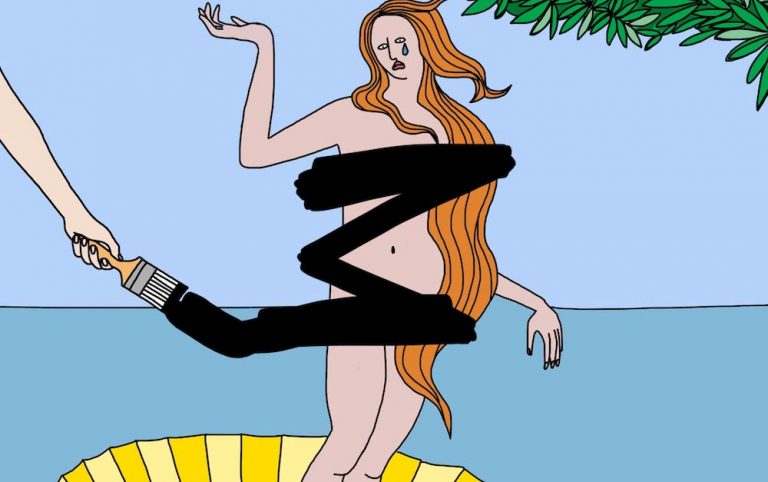In 1485, an acclaimed German portrait painter named Hans Memling unveiled his supposed masterpiece. A carefully-detailed triptych, it depicts three figures; the one on the left, a hideous skeleton sporting a gaping wound; the one on the right, a demonic, black-taloned horror, his midriff the snarling fanged face of an ogre. But it’s the central image that is the most concerning. There, completely naked, stands a woman, a small dog behind her, and a long, thin mirror in her hand. The central image’s title? Vanity.
In a lot of ways, this one assuming image – the height of a thoroughly ordinary fifteenth century painter’s entire career – sums up the rotten core of classical art. Acclaimed critic John Berger put it best in Ways Of Seeing, a book released to tie into his BBC television series of the same name. “You painted a naked woman because you enjoyed looking at her,” wrote Berger. “Then you put a mirror in her hand and you called the painting Vanity, thus morally condemning the woman whose nakedness you had depicted for you own pleasure.”
Classical artists were torn between their desire for fame, for money, for flesh, and their deep, almost crippling hatred of women.
This is the attitude that underpins so much of classical nudist art. Puritanical painters knew full well that unclothed flesh would be welcomed by their wealthy patrons; they were aware that capturing the female form would bring them in countless accolades, and further commissions. But their disregard for women – their hatred, even – compelled them to condemn the very bodies that they spent hours and hours studying, and rendering into oils. They were torn between their desire for fame, for money, for flesh, and their deep, almost crippling hatred of women.
Nor has Memling’s rancid, hypocritical worldview gone out of style in the hundreds of years since he died a rich, successful man. No. This is the attitude that the stuffy old bores that have served as our self-appointed cultural gate keepers for decades still hold. According to this pervasive attitude, women’s bodies are to be desired, but they are also to be censored. Whenever possible, women are to be reduced wholly to their naked form. But, even then, they are also to be condemned as morally outrageous – as promiscuous deviants – if ever they take that sexual power into their own hands and use it themselves, for their own pleasure.
Men – particularly the cantankerous, straight white men that disproportionately make up the community of art curators and buyers – desire bodies only if they can control them.
These days, such an attitude has snuck its way onto the world of social media. According to the conservative policies of social platforms like Instagram, women’s bodies are offensive in ways that men’s bodies aren’t. A woman’s nipple, according to the site, is pornographic, whereas a man’s nipple is as thoroughly inoffensive as an elbow, or an exposed neck. And women who show their bodies – who take that power back into their own hands – are denigrated and abused.
For an entire generation of power-hungry, rich, straight white men, this is the way it goes then, in art as well as life: the female form exists as something to be viewed; to be controlled. It does not belong to a woman – it belongs to the men who line up to view her; to paint her; to possess her.
Women are to be condemned as morally outrageous – as promiscuous deviants – if ever they take that sexual power into their own hands and use it themselves, for their own pleasure.
And like all evil attitudes, this one is pervasive; it sinks deep into the consciousness. John Berger, great cultural critic and feminist that he was, put it well once more. “A woman is always accompanied, except when quite alone, and perhaps even then, by her own image of herself,” he wrote.
“While she is walking across a room or weeping at the death of her father, she cannot avoid envisioning herself walking or weeping. From earliest childhood she is taught and persuaded to survey herself continually. She has to survey everything she is and everything she does, because how she appears to others – and particularly how she appears to men – is of crucial importance for what is normally thought of as the success of her life.”
These are the blatant truths of art; of Instagram; of modern life. It is up to us now to rail against them. It is up to us now to regain control of our own image.

































